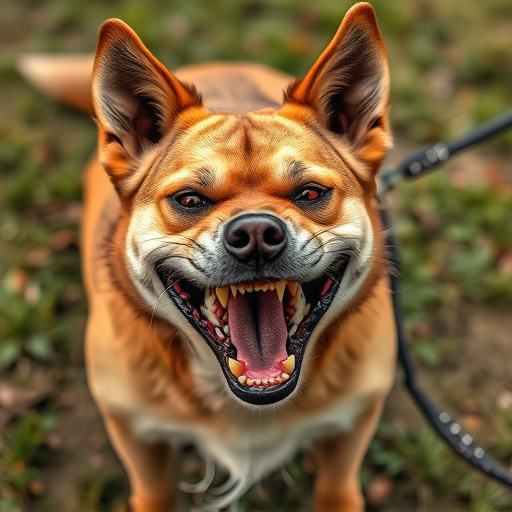Animal pepper spray deters animals by irritating eyes, nose, and throat with capsaicin. Effective range varies from 3-10 meters, depending on ingredient concentration, delivery system, and weather. Precise targeting at face and eyes maximizes effectiveness within range for safe animal management. Safety precautions, including ventilation, gear, and training, are crucial for minimal risk to users and surrounding wildlife.
“Animal pepper spray, also known as mace spray, has emerged as a powerful tool for effective animal control. This article delves into the science behind its effectiveness, exploring how its range and power can be optimized. We’ll dissect key factors influencing performance, providing insights on application techniques for maximum control. Additionally, essential safety precautions and responsible usage guidelines will be highlighted, ensuring informed decisions when deploying this potent yet controlled solution.”
- Understanding Animal Pepper Spray Effectiveness
- Key Factors Influencing Range and Power
- Application Techniques for Optimal Control
- Safety Precautions and Responsible Usage
Understanding Animal Pepper Spray Effectiveness
Animal pepper spray, also known as mace spray, is a non-lethal deterrent designed to incapacitate animals and protect individuals or property. Its effectiveness lies in its active ingredient, capsaicin, which irritates the animal’s eyes, nose, and throat, leading to temporary disorientation and retreat. The effective range of animal pepper spray varies depending on factors such as the size of the container, wind conditions, and the target animal’s species and behavior.
Generally, animal pepper spray has an effective range of 3 to 10 meters (10 to 33 feet). Within this range, the spray can effectively deter or control a wide array of animals, including dogs, cats, raccoons, and even larger wildlife like deer. However, it’s crucial to remember that wind and weather conditions can significantly impact the spray’s reach and accuracy. Proper usage techniques, such as aiming at the animal’s face and eyes, further enhance its effectiveness in controlling and repelling unwanted wildlife.
Key Factors Influencing Range and Power
The effectiveness range and power of animal pepper spray, also known as mace spray, are influenced by several key factors. One of the primary considerations is the concentration of capsaicin, the active ingredient responsible for the burning sensation it causes. Higher concentrations generally result in a longer effective range, making it more potent against aggressive animals like dogs or bears.
Another critical factor is the spray delivery system. Modern animal pepper sprays often use advanced mechanisms that allow for better control and accuracy, ensuring that the spray reaches its intended target efficiently. The can’s design, including the nozzle type and pressure mechanism, directly impacts the spray’s dispersion and range. Additionally, environmental conditions play a role; wind patterns can affect the spray’s trajectory, while temperature and humidity levels might alter its effective range.
Application Techniques for Optimal Control
When utilizing mace spray for animal control, understanding application techniques is key to achieving optimal results within the effective range of animal pepper spray. For best effectiveness, aim directly at the animal’s face, eyes, and nose. This targeted approach maximizes irritation, temporarily blinding and disorienting the target animal, giving you precious time to manage or capture it safely.
Consistency is crucial; apply the spray in quick, even bursts while maintaining a safe distance. The effective range typically ranges from 20 to 30 feet (6 to 9 meters), so staying within this zone ensures the spray reaches the animal effectively. Practice proper safety precautions by wearing protective gear and ensuring good ventilation during application to minimize exposure for both the operator and surrounding wildlife.
Safety Precautions and Responsible Usage
When using mace spray for animal control, safety should always be a top priority. It’s crucial to understand and adhere to the manufacturer’s instructions regarding usage and handling. Animal pepper spray has an effective range of approximately 3-4 meters (10-13 feet), so users must remain outside this zone to avoid direct contact with the spray. Proper ventilation is essential, as the irritant can linger in enclosed spaces. Users should wear protective gear, including goggles and gloves, to minimize skin and eye irritation. Keep the spray out of reach of children and pets to prevent accidental misuse.
Responsible usage includes aiming the spray only at the animal’s face or eyes, never at people or other animals. After use, wash hands thoroughly and dispose of the canister according to local regulations. Regular training and familiarization with the spray’s operation are vital to ensure effective and safe deployment during encounters with aggressive animals.
Animal pepper spray, with its powerful formulation and strategic application techniques, offers an effective range in animal control. Understanding the key factors influencing its reach ensures optimal control while prioritizing safety precautions for responsible usage. By mastering the art of deployment, this non-lethal method can swiftly and humanely manage unwanted wildlife interactions, making it a valuable tool for both professional animal handlers and homeowners. Its proven effectiveness in repelling animals makes it an essential addition to any comprehensive animal control strategy.
